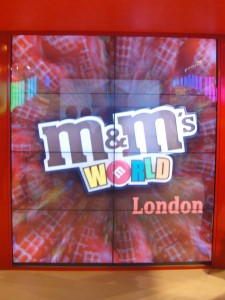Aug
Tips for Setting up A Video Wall
Learn how to set up a video wall.
A video wall is a wall for flat screens that are mounted close together, alongside each other, and are installed for marketing and entertainment purposes. Multiple display walls are commonly seen at airports, control rooms, and major sports venues. They are also used during festivals, community events, shows, and concerts. Multi-monitor media walls are set up for different purposes.
Back in the day, a company that wishes to set up an LCD video wall had to hire professional installers, and the installation can run for a number of days, depending on the size of the wall. Now, it’s very easy to set up a video wall, as there are easy DIY solutions that allow buyers to set up their own multiple screen media wall. Simple installer-friendly multi-screen walls come in 3×3 or 4×4 options. Manufacturers do provide landscape and portrait installation instructions and a maintenance guide should be available. Today, coming up with professional-looking multi-screen wall is no longer a problem.
Basic Video Wall Mounting Instructions
The installation equipment should include setting up the mounting brackets, to which you will attach the back of each LCD/LED screen. The number of brackets needed depends on how big you want your video wall to be. Set the brackets close together so that no seam will appear once you have mounted the LCD/LED monitors to the brackets. Attach the HDMI cables to the monitors and keep in mind that these cables will be connected to a computer, where a person is assigned to control what is shown on the display. Wall installation is a little more complicated because you have to set the brackets on the walls.
Hiding the Video Wall Cables
For a professional-looking LCD or LED video wall, cables should be concealed. Cables trailing behind the video wall create an ugly clutter that distracts viewers. Thus, the network of wires must be hidden from view. There are a few ways to do this. The most common and most convenient way to hide the wires is to conceal them behind drapery. Make sure the cable clutter is behind the multi-screen wall, so passersby do not notice it. A more professional way of concealing the cables is to run them through the wall. This is the right option when the installation is done directly on the wall or is near the wall, although drilling holes through a wall is out of the question in many cases—most especially if you don’t own the establishment.
Finding the Right Location for the Video Wall
The location of your video wall determines the success of your aim in setting up one. Expectedly, video walls should be placed in locations where people usually pass by or stay. Other considerations include the physical environment. You don’t want to expose a flexible video wall and its electronic components outdoors without appropriate weather proofing. Multi-screen media walls should be placed well away from windows, so they don’t get exposed to sunlight. Although LCD screens have anti-glare coating, sunlight can still render the display dull and bother the viewing audience.
The most important consideration when setting up a multiple LCD screen wall is your purpose for setting it up. Some large stores put up multimedia walls just as an ornament. Without a clear purpose, a wall of LCD screens is just one power consuming structure. So to avoid that, make sure that your video wall is used to inform and engage consumers.


